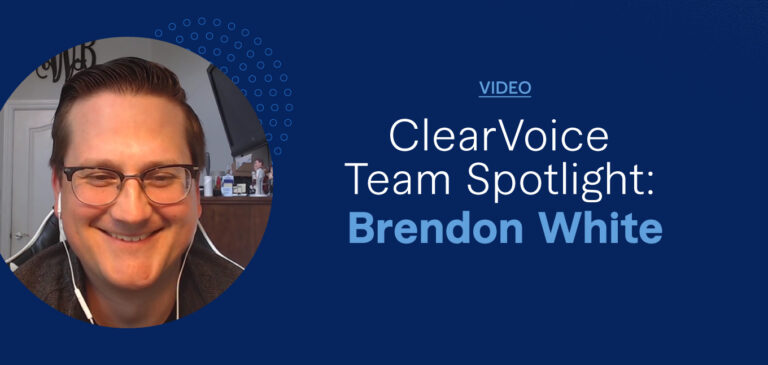When it comes to consuming online video content, our world’s appetite is ravenous. Part of it is our love of storytelling; part of it is the personal and emotional connection that forms when we watch people talking directly to us.
But mostly, it’s about technology and the ease with which these stories can be delivered to us nowadays.
Doubt the appetite? Chew on these eye-catching stats:
- 91% of businesses used video as a marketing tool in 2023
- 96% of marketers value video as an ‘important part’ of their content strategy
- 70% of ‘non-video-marketers’ plan to start online video marketing
Source: Wyzowl
Today’s marketing world is all about staying relevant. So, here’s a quick refresher on how to think about your next video marketing strategy.
Professional tips have been peppered in as well from David Zweig, executive creative director Adim. Zweig worked on video strategy for three years at Warner Bros. Discovery, which is the global curator of content for brands like Discovery Channel, Food Network, Animal Planet, TLC, HGTV, Travel Channel, and others.
5 Key Considerations For Your Next Video Marketing Strategy
1. Audience: Know it and grow it
Let’s be honest, consumers can be a fickle set.
You harvest, acquire, and/or grow them over time and when the next big, shiny thing shows up… they go bye-bye. For now.
That’s why it’ll serve you well to know the needs and wants of your audience. Those who pay the bills. As a marketer, you may think you know ’em well, but a winning video-marketing strategy calls for you to know them better than they know themselves.
Here are a few things to consider in your efforts to build and maintain a steady following:
- Never underestimate the power of a strong brand: The more you understand who you are as a company and how well you can articulate your mission and vision in engaging fashion to your customers — the more they will relate to you.
- Create loyalty wherever possible: The more useful your customers find your video content, the more views and repeat visits you’ll get. Continue to feed and reward them for their time. That’s how you build an audience organically.
- Psychographic and demographic data is great if you have it, but…: There’s a lot to be learned by simply analyzing the data available to you for any tried-and-true video platform. You just need to know how to read — and apply — it.
Pro tip: Regarding the audience, Zweig says the first question you need to ask yourself about your content is:
“Who is this for and what’s the objective? Reverse engineer from the get-go. Just don’t put a video on YouTube because people are putting videos on YouTube. Make sure that it is reaching a goal that is important to your company. Either at that particular part in your campaign or overall for your brand.”
2. Content: Create videos people actually want to watch
No matter how well you know your audience, none of it matters if your content falls flat on its face. The key to delivering engaging content is to know what kind of content will surprise and delight your audience — if not inform the hell out of them.
Also, what will be most sticky if/when they spend time on your channels? Think of the product demos you’ve liked; the explainer videos that kept you engaged; the client testimonials that spoke to you. What was it about them that kept your attention?
Speaking of, in a world where people are either sheltering in place or being cautious so as to avoid large groups of people, remote video shoots are on the uptick. In that regard, it helps to use cutting-edge remote video platforms like Riverside.fm to shoot high-quality 4K content from afar. Though the expectation for pure professionalism varies company by company, having a certain level of quality and seamlessness matters in the world of making — and promoting — your videos online. So plan for it.
Pro tip: Zweig’s advice to companies regarding social cadence:
“What you don’t want to do is keep posting just to post. Every piece of content has to deserve to exist. Otherwise, it’s a waste of your time and energy — and it’s a waste of your audience’s time and energy.”
3. Budget: Spend your dollars in a way that makes sense
When you’re devising a video marketing strategy, it helps to know where video fits into your overall content strategy. That way, you can justify how much budget you need to ask for as you set your goals for the year ahead.
In this regard, you might want to employ a holistic approach that wisely assesses where you will get the best bang for your buck.
In this regard, allocate smartly within three key categories:
- Content production: What’s the cost of creating said content? Are you better off producing short, animated “How-to” videos? Or does it make more sense to go with a bigger branded video to entertain and inform in one fell swoop?
- Distribution: Where does this video belong? Do you have enough traffic on your own channels to get the eyeballs you need to justify its existence? Or should you pay to house it elsewhere in order to hit the numbers and ROI you need?
- Paid promotion: If that’s the case, how much will you need to spend to promote this video across your social channels?
Pro tip: Zweig emphasizes that the rules and expectations are changing a bit:
“If there’s anything we’re all learning right now, it’s that we’re all connected and not too dissimilar from each other. And so, the more you can drop the veil and show who you are, the more people will grow an affinity to your product or service. I think across the board, as far as brands are concerned, it’s a never a losing proposition… unless you’re a jerk and don’t want people to know you’re a jerk. It’s always a bonus to connect with your audience in as many ways as possible. Showing your humanity right now is critical.”
4. Optimize: Get the most out of every channel
If you’re going to spend the money to create content for an audience you’re getting to know, make sure you squeeze every bit of juice out of it by understanding the marketing channels you’ll be distributing to. Be it Facebook, Instagram, YouTube, TikTok, or LinkedIn.
Each of these platforms has its own best practices, rules (spoken and unspoken), and attention spans, so never employ a one-size-fits-all approach. That’s to say what works on YouTube where people are used to watching longer videos, doesn’t work quite as well on the swipe-happier Instagram.
Consider different cut-downs — and getting your point across sooner versus later. Use the information out there to tailor your video content to each specific channel. Here are some statistics to think about:
- 85% of Facebook videos are watched without sound.
- 91% of users watch videos on Instagram weekly.
- Instagram videos that are around 26 seconds long receive the most comments.
- On Twitter, tweets with a video get 10 times more engagement than those without.
- 70% of users on YouTube say they bought a product after seeing it in a video.
It’s not a hard-and-fast rule, but one could argue that the longer our videos become, the shorter our attention spans get.
Think about it: How many times have you looked to see how long a video is before deciding whether to watch it in the first place?
Cue a long, protracted eye-roll for anything over 6 minutes.
Find your sweet spot — and stick to it. And don’t forget to always build time and budget for SEO (search engine optimization). Just because the video is done doesn’t mean it’s… done.
In order to optimize each video’s performance, you’ll need to make sure you:
- Choose an eye-catching thumbnail: Something that represents the content and stands out amid the speed of the feed.
- Nail the right title: Write a short, catchy, informative title that makes use of the right keyword (or words).
- Master the meta description: Using the right keywords to boost page-ranking when search engines crawl your content.
Pro tip: Regarding the importance of SEO, Zweig highlights the value to be gained from optimizing content:
“It matters. Make sure you don’t just post a video with a title and hope it goes gangbusters and goes viral. Video marketing is a long game. It’s not just one video — it’s consistency, planning, analysis, investing in the production, the promotion and whether or not you advertise that really matters.”
5. Test: Make sure what you’ve created is delivering as promised
A/B testing (and focus groups) are a great way to test whether a specific component of your video is working. But in our data-driven society, what is the most common and affordable way to go about the task of testing the videos you’ve produced?
Using the robust reporting tools that social channels have in place (like YouTube and Google Analytics), you can get behind the numbers to gauge watch times, user behaviors, and if necessary, review and filter comments. For instance, is the interaction positive or negative — and do you need to course-correct because something is unclear or inaccurate in the content?
All this will allow you to monitor engagement trends and make determinations based on:
- Views: How many times has your video been watched and where are those views coming from? Organic? Paid? Referrals?
- Engagement rates: How many people are interacting with your video, clicking buttons, and commenting?
- Shares: How many people liked your video enough to share it with their friend or professional network?
There are more tools than ever to gauge what’s working — and what isn’t. Make sure you’re taking advantage of these metrics to maximize every dollar you get to spend.
Pro tip: Of all the metrics you can review when it comes to video, Zweig feels one of the most important is — watch time:
“Watch time to me is slightly primary to me over view count. If it’s getting a lot of traction, that’s nice. If it’s getting a lot of shares, that’s really great. But what I really want to know is this: Is 20 percent of the video being consumed by enough people that it makes it worth creating in the first place?”
Ready to Elevate Your Video Marketing Strategy?
Video content isn’t going anywhere. It’s essential to have an airtight video marketing strategy in place. Whether you need help creating one video or one hundred, ClearVoice has your back. Our managed content creation and expert team can help you create top-tier video content that skyrockets your brand’s growth success. Talk to one of our strategists today to get started.








